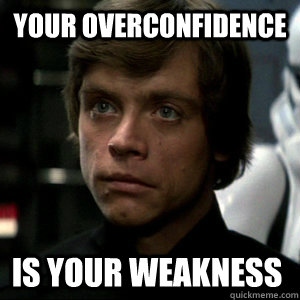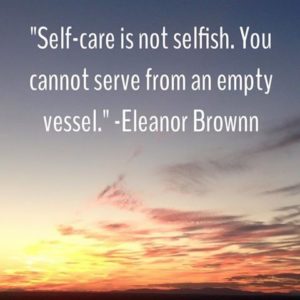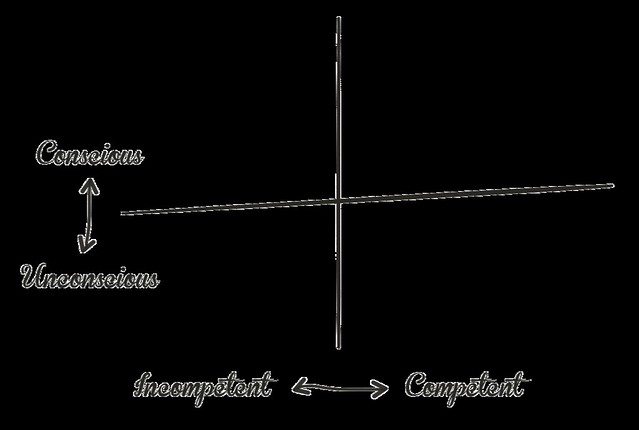It is important to have a balanced relationship with one’s students. One that has professional distance, as not to be overly friendly and remain objective, but yet a genuine interest should be taken in the students’ lives inclusive of values and activities. Many educators in all arenas are voluntarily taking professional development courses in “Pop Culture” so that they are better able to bridge the generational gaps that exist between them and their target student population. I believe that it is essential to directly ask the students, without prying into their personal lives, about what they specifically deem important and applicable towards their lives. As every effective educator is aware, knowledge and skill retention is not only enhanced but multiplied when the students are able to directly to apply the learning to relevant, real-life situations.
Guided Pathways and Collaborative Advising
In the spring of 2015, GCC advisors were asked to develop proposals for new models of advising we believed would improve our services to students. To my knowledge and dismay, none of the models gained any traction. It was an extremely valuable exercise that allowed us to reflect and determine how we would change advising at GCC if given the opportunity.
The group I participated in developed a proposal for a new model called Collaborative Advising. The model centers around stronger connections between advisement and academic departments, specialized advising, and strategic use of technological resources.
Along comes Guided Pathways, a growing national conversation in community colleges about improving student experience and completion. Everything about Guided Pathways strengthens the case for Collaborative Advising. Maybe the model deserves a second look.
Read more about Guided Pathways and Collaborative Advising here. I’ll be happy to hear back from you if you want to talk.
Kindly,
Kristin
Filed under: STEAM Tagged: Academic Advising, Collaborative Advising, Guided Pathways, Write 6X6
![]()
Deal With It!
I don’t know about you, but I find interpersonal conflict to be a difficult issue to tackle. My first instinct is to ignore the problem and be like an ostrich – stick my head in the sand and hope the unresolved issue of conflict will just go away naturally. Of course, I’d like to shrug it off and “let it go,” but in order for me to let go of the conflict, I must first deal with it. And to deal with it I must address it. Therein lies the difficult part – my part. I find it most effective to address the issue in conflict directly with the person I’m having the conflicting issue with. Yes, that means communicating with the individual in-person and not through an email or a text. In this way both sides are able to communicate verbally and it allows for the use of body language. I’ve gotten my feathers ruffled on many occasions by misinterpreting written word only to realize later that it was a simple case of misunderstanding on my part. For issues on which there seems to be no resolution, I’ve found it helpful to employ the assistance of a neutral third-party. By following my own advice, however, I’m usually able to handle difficult issues best by dealing with them directly and timely. In other words, I just deal with it!
Making an Entrance
In my heart of hearts, I genuinely want those around me to succeed, and I take pleasure in watching them do well as they develop. I’d rather help people work out their problems than tell them what they need to do. I don’t consider any of those things character faults, but very early in my teaching experience I learned that certain actions can be confused with weakness. Weakness in the classroom leads to problems that are not easy to correct.
To say I was nervous on my first day in the classroom would be an understatement. I made the mistake of not wearing an undershirt, and my light blue dress shirt was a drenched dark mess by the end of the 45-minute period. I imagine I seemed as ridiculous as Sir James Martin from Love & Friendship:
That lack of self-confidence and abundance of nerves lead to problems throughout the rest of the semester. I found out very quickly that if a classroom doesn’t respect you as a person, they also will not respect your lectures, your grading, or your discipline.
That was a difficult semester, but as time went on I gained confidence and my nerves subsided. This lead to better relationships with my students and more success in the classroom. Year to year things improved incrementally. Eventually though, something happened.

With my nerves fully at bay, my inner-nice guy came out again. With it, the entire catalog of issues I had in my early years started to manifest themselves again. Why? Because while my students may have liked me, they did not respect me.
So here we are at the heart of the lesson folks: Respect is key. Respect should always be in the back of your mind when standing behind that desk. Whether it was nerves or being “Mr. Nice Guy”, I lost the respect of my students, and with it, full control of my classroom.
It wasn’t easy, and I still make mistakes, but I have learned to balance my kind demeanor with the responsibilities of being an educator. I found that I can still joke, have fun, and be myself, as long as students know I am serious about my job.
The most effective method I have found to encourage a healthy classroom dynamic is to start off strong. I like to make my first week of class filled to the brim with activity. I like to give students things to do, show them the gamut of what is to come: a journal, a discussion, a short essay, a quiz, and a reading. I do it all, because it lets students know that the primary goal of my course is for them to learn. If we end up having fun in the process, that is a bonus.
The classroom is a world with its own environment, dynamics, and life. It has the power to evolve and overtake you if you let it. Start off strong, confident, and focused, and that classroom will turn into an environment that encourages both learning and respect.
AHHHHH, Perfection!
I learned to use perfection as a way to survive life. Perfection is exhausting. Perfection is impossible. Perfection leads to denial, shock and disbelief. Perfection limits success. Perfection was how I was rewarded, noticed, and regarded. Perfection limited my ability to successfully navigate difficult situations. Using perfection to navigate difficult situations increased my stress level, reduced my self-worth and confidence, and interfered with relationships.
Ahhh, connection! Connection acknowledges our frailty, vulnerability, and humanness. When I allowed myself to connect during difficult situations, I gained strength, knowledge, and support. Connecting is scary. Connecting means I may be rejected. Connecting means I have limitations. Sometimes I didn’t know how to connect. I didn’t know what to say, how to act, or how to fulfill expectations. Connection meant I wasn’t alone. Connecting is healthy and helpful.
The dilemma of perfection and connection happens on a daily basis in Testing. It is easy to celebrate success. It is easy to praise perfection. It can be hard to connect through disappointments. Connecting in the imperfect moments builds strength. Connecting becomes difficult because we may be unsure of how to connect, the other person may reject attempts to connect, or we see our pain, fear, and insecurities in others.
Connecting, whether with ourselves or with another, is human. I feel successful when I have connected with at least one person. Connecting is easier when I build rapport, express empathy, and know my limits.
Rapport becomes crucial because it leads to trust, respect, and confidence. In Testing we must establish rapport quickly. This video describes strategies we use to connect with students. Students who are anxious, disappointed, elated, satisfied, and content.
https://www.youtube.com/watch?v=QqjpgH4Z-0Q
We compliment rapport with empathy. In most cases, we are not taking the tests. So we are not always feeling what the student feels. We can acknowledge, accept, and validate the student’s feeling(s). It is in these moments we connect through differences.
 I am human too. I have limits and needs. I connect better when I am energized, refreshed, and focused. Sometimes, difficult situations means I have to reflect. I need to understand the impact on me. Once I know the impact, I can take steps to recover, recharge, and rejuvenate. As a Testing team we are working on creating this space in our department. When the demand is high, it is easy to neglect ourselves and serve others. It is in these precise moments, when we need to take time for us.
I am human too. I have limits and needs. I connect better when I am energized, refreshed, and focused. Sometimes, difficult situations means I have to reflect. I need to understand the impact on me. Once I know the impact, I can take steps to recover, recharge, and rejuvenate. As a Testing team we are working on creating this space in our department. When the demand is high, it is easy to neglect ourselves and serve others. It is in these precise moments, when we need to take time for us.
Difficult Times
As I have been contemplating this weeks topic I’ve decided to write about an event that happened in the Math Department many years ago.
The discussion about textbook selection came up in a department meeting. The discussion got a little heated. In the next meeting after this initial discussion several members, in my opinion, did not act that professionally. After that second meeting there was a definite split in the department. Thus, I figured that bringing in a specialist would be the best course of action. Several folks disagreed with me about bringing someone in to help. But fortunately I managed to win the day on that. As it turned out that was one of the best choices I could have made. We had several meetings as a department with this person, from District, leading the discussion. At the end they had managed to bring us back together. The waters had been smoothed and we had come to a majority decision that exists to this day. BTW, not the decision I preferred 🙂
I share this event here because I learned how important it can be to have the right people along side you when difficult times come upon you. Don’t be afraid to seek out experts as needed. My 2 cents worth.
Get to Know What You Don’t Know
Back when I taught computer graphics and web design courses, I would introduce my students to this concept by drawing quadrants on the whiteboard during the second week of class:

I was trying to introduce them to the idea that sometimes you aren’t aware when you don’t know something. And that in class they should work to become aware of what they don’t know (conscious of incompetence), and then practice until they became skilled at something previously unknown (conscious & competent).
One student’s explanation of unconscious incompetence: “When you didn’t even know something was a thing.”
When I am in a situation I find difficult, if I’m honest, there is usually something I don’t know, and it’s impacting my ability to skillfully handle the difficulty. I find it useful to try and identify what I’m unconscious of and see if it’s a skill I need to build. I’ve started thinking of the quadrants as a model of learning progression, starting with ignorance and ending with the mastery of a skill:
- Unconscious Incompetence: You are unaware of the skill and your lack of proficiency
- Conscious Incompetence: You are aware of the skill and your lack of proficiency
- Consciously Competent: You are able to use that skill, but only with effort
- Unconsciously Competent: Performing the skill becomes automatic

Learning model illustration by Matt Kissick
If I can become aware of a skill that I lack, this model is the way out of a difficult situation, though often over time, since practice is usually required to become consciously competent. Still, it really helps in terms of moving forward. Maybe you can use it, too.
The Lesser of Two Weevils
If you were forced to make a choice between two difficult situations, which would you choose? The lesser of two weevils, of course.
I don’t know about you guys, but I am faced with this type of decision nearly every day. I could come up with a million examples.
For me, it always involves my ability to see into the crystal ball and guess the future outcome of a situation based on past errors in calculation. Generally it is impossible to avoid regrets, so you have to figure out which is less torturous to the most people involved.
Here is my formula for difficult situations.
- Consider my own sanity and wellbeing first and foremost. While this may appear selfish at face value, everyone else is ultimately affected if you become insane and unwell because of your decision.
- Consider others’ happiness and wellbeing. It is nice to see people smile and get their way. I have young children, I know this. But if there is a valuable lesson to be learned in the process, sometimes the bandaid will do more harm than good. Always consider the long term outcome.
- Consider kindness. If you are not kind in your delivery of your decision, regardless of the level of cruelty, it is your lack of kindness that will come back to bite you in the end. Always deliver gently.
- Consider who else is affected. If my family is affected in a negative way, it is a deal breaker. My family comes first.
- Consider the 4 agreements (Be impeccable with your word, Don’t take it personally, Don’t make assumptions, Always do your best). All communication should be routed through these four agreements. Everything that has ever gone wrong in my life has been a result of my choice to ignore one of these.
Every difficult situation should be handled differently based on the circumstances. There will never be a perfect formula. We learn from our past mistakes and make better decisions as we get older and wiser. But we can still make bad decisions even if we are old and wise!
Consider the formula, choose the lesser of two weevils, and take that giant leap of faith that you have made the best decision given the circumstances!
Cheers!
Where everybody knows your name
And they’re always glad you came . . .
[youtube https://www.youtube.com/watch?v=xYcX534JqG4&w=854&h=480]
That’s how I feel when I come to GCC every day. I’ve been building relationships here since 2003, and I value them deeply.
I like feeling known. I like feeling that I’m on a team with like-minded people. I like to feel that we’re all solving problems on behalf of our students.
Anyone who knows me knows that I build relationships around food and exercise. One of my mentors told me about the psychological impact of offering a snack. She said that it hearkens back to stone-age times. Offering something to your guest sends the signal that you have your own food; you won’t eat them. Ha!
The biggest barrier to relationships for me is time. If we stay busy being busy, we don’t have time to listen to each other. I’m always looking for ways to add breathing space to my day so that I can connect with someone. Exercising with colleagues allows me to do that. Want to brainstorm? Let’s take a walk!
Cheers!
Can we talk?
Does any phrase strike more fear in our hearts? Our brains immediately go to the deepest, scariest places to imagine what terrible news or problem must be addressed.
Decades ago, I used to think that if I were only in the right job or the right relationship that there wouldn’t be any problems. Time changes everything.
Now I know it’s not “if there’s a problem” but “when there’s a problem”, and I’ve tried to develop some tools.
This article from Harvard Business Review focuses on actions we can take to prepare for and engage in hard conversations. From all of these, my strong suit is #2: lead with bad news simply and clearly in the first sentence. My experience has taught me that this helps scare away the monster thoughts that inevitably fill our minds. My growth area is to find the best time and place for these conversations. For example, I used to close my door, but I found that seems to scare people. I used to make appointments, but the anticipation can leave a person too worried to process information clearly. Now I try to be in person and immediate so that there are no lingering doubts about a situation. Almost always I find that the person I’m talking with “knew” something was coming and is glad to have the open dialogue. Notice that I said almost always?
My advice to others is to find a strategy that fits your personal style and allows you to feel that you are being your most authentic self.
Of course, before doing anything, be sure that it’s really your problem to solve. Remember the monkeys!


